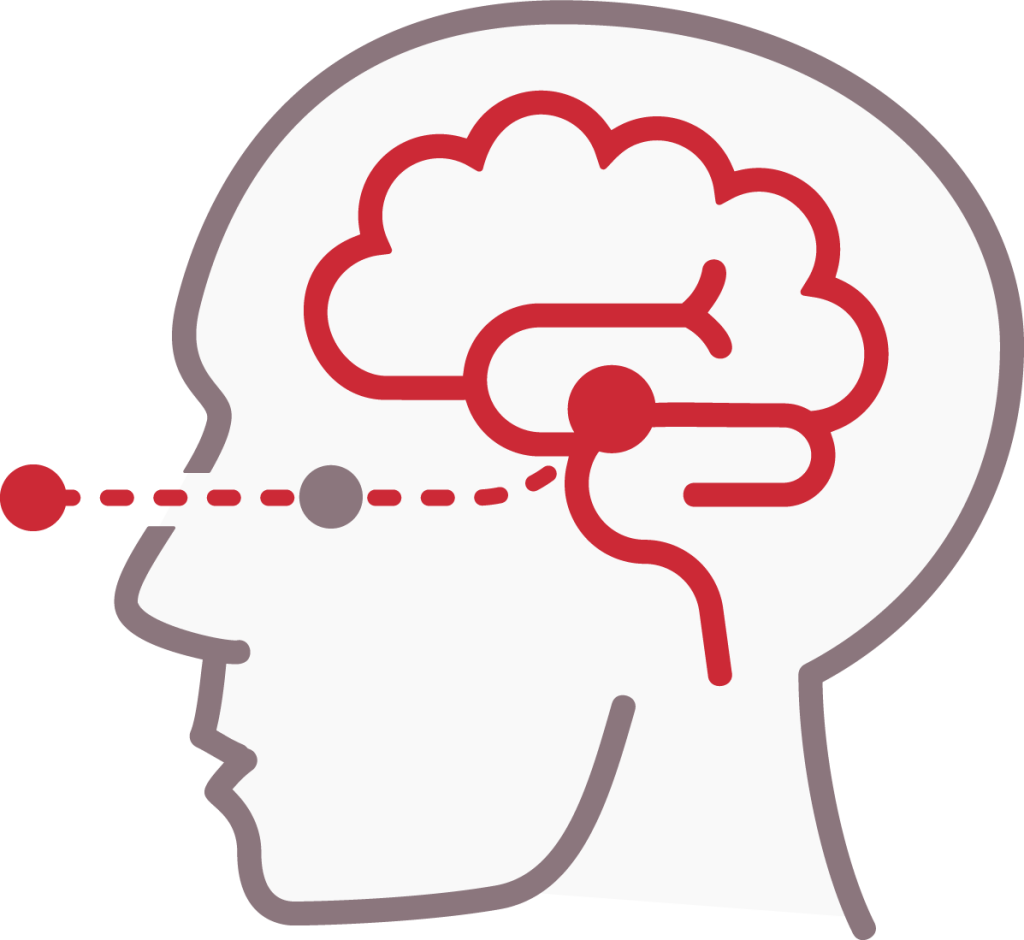Brainspotting ®
therapy based on a belief that certain eye positions can evoke emotions, sensations and memories, because they access specific ‘brainspots’ where traumatic memories are stored
Brainspotting is a modern therapy that combines different approaches like EMDR, mindfulness, and body-based techniques. It is designed to assist clients in working through tough emotions or traumatic experiences. During brainspotting, therapists use various eye positions to pinpoint „brainspots” connected to specific experiences, emotions, or sources of distress. Once a brainspot is identified, therapists employ mindfulness techniques to guide clients in accessing, experiencing, and processing the thoughts and feelings associated with that brainspot.
How does Brainspotting work?
The brainspots, where traumatic memories are stored, can vary among individuals, so therapists begin by identifying the spot through a series of eye movement exercises with each client.
Brainspotting allows access to brain regions that are challenging to reach through conventional therapeutic methods. For instance, some researchers speculate that traumatic memories reside in the midbrain, an area situated beneath the parts of the brain associated with language and conscious thoughts. While eye positioning is used to access these traumatic memories, brainspotting also involves using mindfulness to process these memories and emotions within the body.

What can Brainspotting help with?
Originally developed as a trauma treatment, brainspotting has since expanded to address depression, anxiety disorders, and more. Its techniques may help in the treatment of:
- Post-traumatic stress disorder (PTSD) or complex trauma
- Attachment issues stemming from childhood trauma
- Dissociative disorders
- Emotion regulation problems, including anger issues or mood swings
- Symptoms of depression or sadness
- Anxiety disorders or specific phobias
- Substance use disorders or addictions
Are there side effects of Brainspotting?
Brainspotting is generally considered low-risk. It doesn’t carry the side effects that medications might, and it’s not likely to have adverse effects on your physical or mental well-being. The primary challenge of brainspotting lies in the intense and uncomfortable emotions you may confront during sessions, particularly as you delve into traumatic memories and experiences.
Is Brainspotting effective?
Brain-body therapies like EMDR (Eye Movement Desensitization and Reprocessing), EFT (Emotional Freedom Techniques), somatic experiencing, and brainspotting were once considered unconventional but have gained recognition for effectively treating trauma, with many listed as „Evidence-Based Practices” by the APA (American Psychological Association). While brainspotting is not yet on that list, it shows promise. Developed in 2003, brainspotting requires more research to fully establish its effectiveness. Early studies indicate that it’s as effective as EMDR for PTSD and can benefit those dealing with anxiety and depression, often with significant improvements after just one to three sessions. In comparison, established trauma therapies like CPT (Cognitive Processing Therapy), CBT (Cognitive Behavioral Therapy), and prolonged exposure therapy typically require 12 or more sessions. Additionally, a six-month follow-up suggests that three brainspotting sessions may provide long-term benefits for people with PTSD.
What to expect in a Brainspotting session
Brainspotting therapy typically consists of short-term treatment, involving up to three sessions lasting around 60-90 minutes each. Some therapists may integrate brainspotting with other therapies or offer continued talk therapy. A brainspotting session differs from traditional talk therapy. Here’s what happens during a session:
1. Building Rapport: The therapist aims to establish trust and safety, often starting with a first-session chat to get to know you and address your concerns.
2. Relaxation Techniques: Before diving into brainspotting, many therapists use relaxation methods such as guided imagery or meditation to help you feel at ease.
3. Discussing Upsetting Topics: Despite mind-body techniques, you’ll still talk about troubling memories and issues to focus on problem resolution.
4. Locating Feelings: Therapists help you become more aware of how your body responds to certain memories, asking you to identify emotions and bodily sensations.
5. Finding the Brainspot: A pointer or similar object is used to identify your „brainspot” by tracking strong emotions or difficult memories.
6. Holding the Position: Once found, you fixate your eyes on the spot, focusing inward on sensations, emotions, thoughts, and memories. You can do this with your eyes open or closed.
7. Embracing Mindfulness: Brainspotting involves mindfulness, encouraging you to accept and observe uncomfortable thoughts and feelings.
8. Processing Trauma: You’ll experience discomfort and sensations, and the therapist will guide you in fully experiencing them, as they believe this aids in trauma processing.
9. Discussing Thoughts and Feelings: Towards the end of the session, there’s time to integrate and make sense of the experiences, including shifts in your perception of traumatic events.
10. Planning Further Treatment: Since brainspotting is usually brief, you’ll discuss next steps. This may include another session, ending therapy, or transitioning to a different therapist or treatment. Your preferences matter in this decision-making process.